
Visual art of the United States or American art is visual art made in the United States or by U.S. artists. Before colonization, there were many flourishing traditions of Native American art, and where the Spanish colonized Spanish Colonial architecture and the accompanying styles in other media were quickly in place. Early colonial art on the East Coast initially relied on artists from Europe, with John White the earliest example. In the late 18th and early 19th centuries, artists primarily painted portraits, and some landscapes in a style based mainly on English painting. Furniture-makers imitating English styles and similar craftsmen were also established in the major cities, but in the English colonies, locally made pottery remained resolutely utilitarian until the 19th century, with fancy products imported.

Gilbert Stuart was an American painter born in the Rhode Island Colony who is widely considered one of America's foremost portraitists. His best-known work is an unfinished portrait of George Washington, begun in 1796, which is usually referred to as the Athenaeum Portrait. Stuart retained the original and used it to paint scores of copies that were commissioned by patrons in America and abroad. The image of George Washington featured in the painting has appeared on the United States one-dollar bill for more than a century and on various postage stamps of the 19th century and early 20th century.

Benjamin West, was a British-American artist who painted famous historical scenes such as The Death of Nelson, The Death of General Wolfe, the Treaty of Paris, and Benjamin Franklin Drawing Electricity from the Sky.

Rembrandt Peale was an American artist and museum keeper. A prolific portrait painter, he was especially acclaimed for his likenesses of presidents George Washington and Thomas Jefferson. Peale's style was influenced by French neoclassicism after a stay in Paris in his early thirties.

William Rush was a U.S. neoclassical sculptor from Philadelphia, Pennsylvania. He is considered the first major American sculptor.

Charles Allan Grafly, Jr. was an American sculptor, and teacher. Instructor of Sculpture at the Pennsylvania Academy of the Fine Arts for 37 years, his students included Paul Manship, Albin Polasek, and Walker Hancock.
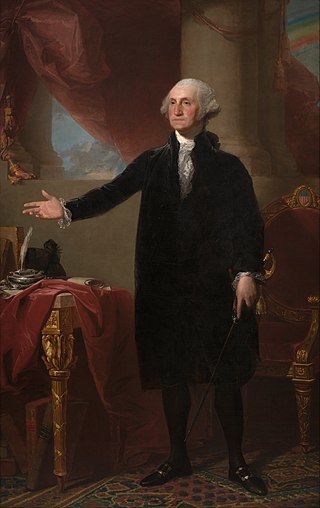
The Lansdowne portrait is an iconic life-size portrait of George Washington painted by Gilbert Stuart in 1796. It depicts the 64-year-old president of the United States during his final year in office. The portrait was a gift to former British Prime Minister William Petty, 1st Marquess of Lansdowne, and spent more than 170 years in England.
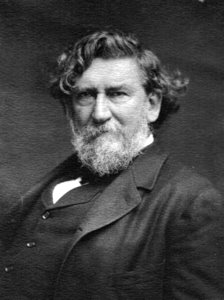
Thomas Satterwhite Noble was an American painter as well as the first head of the McMicken School of Design in Cincinnati, Ohio.

Charles Bird King was an American portrait artist, best known for his portrayals of significant Native American leaders and tribesmen. His style incorporated Dutch influences, which can be seen most prominently in his still-life and portrait paintings. Although King's artwork was appreciated by many, it has also been criticized for its inaccurate depictions of Native American culture.
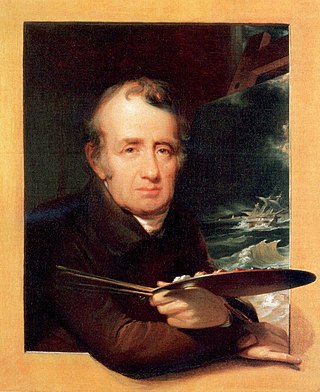
Thomas Birch was an English-born American portrait and marine painter.
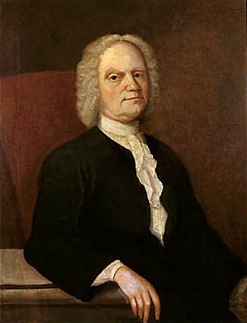
Gustavus Hesselius was a Swedish-born American painter. He was European trained and became a leading artist in the mid-Atlantic colonies during the first half of the eighteenth century. He was among the earliest portrait painters and organ builders in the United States. He was named to the Prince George's County Hall of Fame by the Prince George's County Historical Society.

Jacob Eichholtz (1776–1842) was an early American painter, known primarily for his portraits in the Romantic Victorian tradition. Born in Lancaster, Pennsylvania in a family of prosperous Pennsylvania Germans, he spent most of his professional life in Philadelphia. A coppersmith by trade, he turned to painting and achieved both recognition and success despite being mainly self-taught as an artist. He is known to have painted over 800 portraits over the course of 35 years. Hundreds of his works are housed in art museums, historical societies, and private collections throughout the United States.

William Rush and His Model is the collective name given to several paintings by the American artist Thomas Eakins, one set from 1876–77 and the other from 1908. These works depict the American wood sculptor William Rush in 1808, carving his statue Water Nymph and Bittern for a fountain at Philadelphia's first waterworks. The water nymph is an allegorical figure representing the Schuylkill River, which provided the city's drinking water, and on her shoulder is a bittern, a native waterbird related to the heron. Hence, these Eakins works are also known as William Rush Carving His Allegorical Figure of the Schuylkill River.

Jennie Augusta Brownscombe was an American painter, designer, etcher, commercial artist, and illustrator. Brownscombe studied art for years in the United States and in Paris. She was a founding member, student and teacher at the Art Students League of New York. She made genre paintings, including revolutionary and colonial American history, most notably The First Thanksgiving held at Pilgrim Hall in Plymouth, Massachusetts. She sold the reproduction rights to more than 100 paintings, and images of her work have appeared on prints, calendars and greeting cards. Her works are in many public collections and museums. In 1899 she was described by New York World as "one of America's best artists."
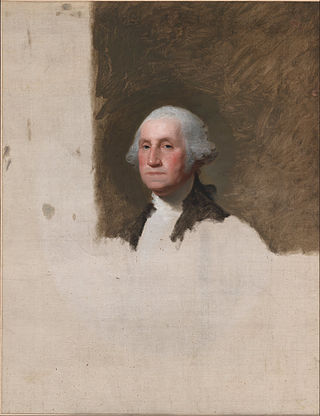
The Athenaeum Portrait, also known as The Athenaeum, is an unfinished painting by Gilbert Stuart of United States President George Washington. Created in 1796, it is Stuart's most notable work. The painting depicts Washington at age 64, about three years before his death, on a brown background. It served as the model for the engraving that would be used for Washington's portrait on the United States one-dollar bill.

Gabrielle de Veaux Clements was an American painter, print maker, and muralist. She studied art at the Philadelphia School of Design for Women, Pennsylvania Academy of the Fine Arts, and in Paris at Académie Julian. Clements also studied science at Cornell University and graduated with a Bachelor of Science degree. She created murals, painted portraits, and made etchings. Clements taught in Philadelphia and in Baltimore at Bryn Mawr School. Her works have been exhibited in the United States and at the Paris Salon. Clements works are in several public collections. Her life companion was fellow artist Ellen Day Hale.

Alice Kent Stoddard (1883–1976) was an American painter of portraits, landscapes, and seascapes. Many of her works, particularly portraits, are in public collections, including University of Pennsylvania's portrait collection, Woodmere Art Museum, and other museums. She lived and painted on Monhegan Island in Maine, an enclave of artists. During World War II, she worked as a combat artist and drafted designs for airplanes. She married late in life to Joseph Pearson, who had been a friend and taught at the Pennsylvania Academy of the Fine Arts.

John Green was a portrait painter who later became a judge. Born in the Thirteen Colonies, he later migrated to Bermuda, where he died.
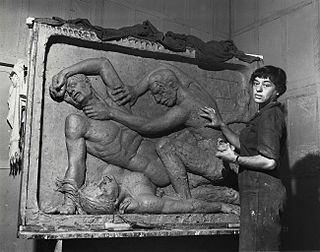
Hélène Sardeau was an American sculptor, born in Antwerp, Belgium, who moved with her family to the United States when she was about 14 years old.

Joseph Harrison Jr. was an American mechanical engineer, financier and art collector. He made a fortune building locomotives for Russia, and was decorated by Czar Nicholas I for completing the Saint Petersburg-Moscow Railway.




















